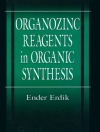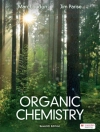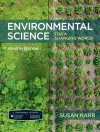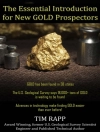The shift towards being as environmentally-friendly as possible has resulted in the need for this important volume on the role of ionic liquids in green chemistry. Edited by Peter Wasserscheid, one of the pioneers of ionic liquid research, and Annegret Stark, this is an essential resource for anyone wishing to gain an understanding of the world of green chemistry, as well as for chemists, environmental agencies and chemical engineers.
İçerik tablosu
lonic Liquids and Green Chemistry – an Extended Preface XIII
About the Editors XXI
List of Contributors XXIII
Part I Green Synthesis 1
1 The Green Synthesis of Ionic Liquids 3
Maggel Deetlefs and Kenneth R. Seddon
1.1 The Status Quo of Green Ionic Liquid Syntheses 3
1.2 Ionic Liquid Preparations Evaluated for Greenness 4
1.3 Which Principles of Green Chemistry are Relevant to Ionic Liquid Preparations? 6
1.4 Atom Economy and the E-factor 7
1.4.1 Atom Economy 7
1.4.2 The E-factor 8
1.5 Strengths, Weaknesses, Opportunities, Threats (SWOT) Analyses 8
1.6 Conductive Heating Preparation of 1-Alkyl-3-methylimidazolium Halide Salts 8
1.7 Purification of 1-Alkyl-3-methylimidazolium Halide Salts 12
1.7.1 SWOT Analysis: Conductively Heated Preparation of 1-Alkyl-3- Methylimidazolium Halide Salts and Their Subsequent Purification 14
1.8 Ionic Liquid Syntheses Promoted by Microwave Irradiation 15
1.8.1 Microwave-assisted Versus Traditional Ionic Liquid Preparations 18
1.8.2 SWOT Analysis: Microwave-promoted Syntheses of Ionic Liquids 18
1.9 Syntheses of Ionic Liquids Promoted by Ultrasonic Irradiation 20
1.9.1 SWOT Analysis: Ultrasound-promoted Syntheses of Ionic Liquids 22
1.10 Simultaneous Use of Microwave and Ultrasonic Irradiation to Prepare Ionic Liquids 23
1.10.1 SWOTAnalysis: Simultaneous Use of Microwave and Ultrasonic Irradiation to Prepare Ionic Liquids 24
1.11 Preparation of Ionic Liquids Using Microreactors 25
1.11.1 SWOT Analysis: Preparation of Ionic Liquids Using Microreactors 27
1.12 Purification of Ionic Liquids with Non-halide Anions 28
1.12.1 Purification of Hydrophobic Versus Hydrophilic Ionic Liquids 28
1.12.2 SWOT Analyses: Purification of Hydrophobic and Hydrophilic Ionic Liquids 29
1.13 Decolorization of Ionic Liquids 31
1.13.1 SWOT Analysis: Decolorization of Ionic Liquids 31
1.14 Conclusion 34
References 36
Part II Green Synthesis Using Ionic Liquids 39
2 Green Organic Synthesis in Ionic Liquids 41
Peter Wasserscheid and Joni Joni
2.1 General Aspects 41
2.1.1 The Extremely Low Vapor Pressure of Ionic Liquids 43
2.1.2 Stability of Ionic Liquids in Organic Reactions 44
2.1.3 Liquid-Liquid Biphasic Organic Reactions 46
2.1.3.1 Tunable Solubility Properties 47
2.1.3.2 Product Isolation from Organic Reactions with Ionic Liquids 49
2.1.4 Reactive or Catalytic Ionic Liquids in Organic Synthesis 51
2.2 Friedel-Crafts Alkylation 54
2.2.1 Introduction and Technical Background 54
2.2.2 Ionic Liquids in Friedel-Crafts Reaction – the Unique Selling Point 55
2.2.3 Liquid-Liquid Biphasic Catalysis 56
2.2.4 Supported Ionic Liquid Phase (SILP) Friedel-Crafts Catalysis 57
References 59
3 Transition Metal Catalysis in Ionic Liquids 65
Peter Wasserscheid
3.1 Solubility and Immobilization of Transition Metal Complexes in Ionic Liquids 65
3.2 Ionic Liquid-Catalyst Interaction 67
3.2.1 Activation of Transition Metal Complexes by Lewis Acidic Ionic Liquids 68
3.2.2 In Situ Carbene Complex Formation 68
3.3 Distillative Product Isolation from Ionic Catalyst Solutions 70
3.4 New Opportunities for Biphasic Catalysis 72
3.5 Green Aspects of Nanoparticle and Nanocluster Catalysis in Ionic Liquids 75
3.6 Green Aspects of Heterogeneous Catalysis in Ionic Liquids 77
3.7 Green Chemistry Aspects of Hydroformylation Catalysis in Ionic Liquids 79
3.7.1 Feedstock Solubility 79
3.7.2 Catalyst Solubility and Immobilization 80
3.7.3 Use of Phosphite Ligands in Ionic Liquids 81
3.7.4 Halogen-containing Ionic Liquids Versus Halogen-free Ionic Liquids in Hydroformylation 81
3.7.5 Hydroformylation in sc CO2-Ionic Liquid Multiphasic Systems 82
3.7.6 Reducing the Amount of Ionic liquid Necessary – the Supported Ionic Liquid Phase (SILP) Catalyst Technology in Hydroformylation 83
3.8 Conclusion 85
References 85
4 Ionic Liquids in the Manufacture of 5-Hydroxymethylfurfural from Saccharides. An Example of the Conversion of Renewable Resources to Platform Chemicals 93
Annegret Stark and Bernd Ondruschka
4.1 Introduction 93
4.1.1 Areas of Application for HMF and its Derivatives 95
4.1.1.1 Direct Uses of HMF 95
4.1.1.2 Derivatives of HMF 96
4.1.2 Summary: Application of HMF and Its Derivatives 98
4.2 HMF Manufacture 99
4.2.1 General Aspects of HMF Manufacture 99
4.2.2 Methods of Manufacture of HMF from Fructose 100
4.2.3 Methods of Manufacture of HMF from Sugars Other Than Fructose 104
4.2.4 Deficits in HMF Manufacture 105
4.3 Goals of Study 105
4.4 HMF Manufacture in Ionic Liquids – Results of Detailed Studies in the Jena Laboratories 105
4.4.1 Temperature 106
4.4.2 Concentration and Time 106
4.4.3 Effect of Water 108
4.4.4 Effect of Purity 109
4.4.5 Effect of the Choice of Ionic Liquid 111
4.4.6 Other Saccharides 112
4.4.7 Continuous Processing of HMF 114
4.5 Conclusion 117
References 118
5 Cellulose Dissolution and Processing with Ionic Liquids 123
Uwe Vagt
5.1 General Aspects 123
5.2 Dissolution of Cellulose in Ionic Liquids 127
5.3 Rheological Behavior of Cellulose Solutions in Ionic Liquids 129
5.4 Regeneration of the Cellulose and Recycling of the Ionic Liquid 131
5.5 Cellulosic Fibers 131
5.6 Cellulose Derivatives 134
5.7 Fractionation of Biomass with Ionic Liquids 134
5.8 Conclusion and Outlook 135
References 135
Part III Ionic Liquids in Green Engineering 137
6 Green Separation Processes with Ionic Liquids 139
Wytze (G. W.) Meindersma, Ferdy (S. A. F.) Onink, and Andre B. de Haan
6.1 Introduction 139
6.2 Liquid Separations 141
6.2.1 Extraction 141
6.2.1.1 Metal Extraction 141
6.2.1.2 Extraction of Aromatic Hydrocarbons 145
6.2.1.3 Proteins 151
6.2.2 Extractive Distillation 153
6.2.2.1 Conventional Process 153
6.2.2.2 Ionic Liquids in Extractive Distillation 155
6.2.2.3 Conclusions 157
6.3 Environmental Separations 158
6.3.1 Desulfurization and Denitrogenation of Fuels 158
6.3.1.1 Conventional Desulfurization 158
6.3.1.2 Desulfurization with Ionic Liquids 158
6.3.1.3 Oxidative Desulfurization 162
6.3.1.4 Conclusions 163
6.4 Combination of Separations in the Liquid Phase with Membranes 163
6.4.1 Conclusions 164
6.5 Gas Separations 164
6.5.1 Conventional Processes 164
6.5.2 CO2 Separation with Standard Ionic Liquids 165
6.5.3 CO2 Separation with Functionalized Ionic Liquids 165
6.5.4 CO2 Separation with Ionic Liquid (Supported) Membranes 166
6.5.5 Olefin-Paraffin Separations with Ionic Liquids 168
6.5.6 Conclusions 168
6.6 Engineering Aspects 168
6.6.1 Equipment 168
6.6.2 Hydrodynamics 169
6.6.3 Mass Transfer 171
6.6.4 Conclusions 172
6.7 Design of a Separation Process 172
6.7.1 Introduction 172
6.7.2 Application of COSMO-RS 173
6.7.3 Conclusions 174
6.8 Conclusions 175
References 176
7 Applications of Ionic Liquids in Electrolyte Systems 191
William R. Pitner, Peer Kirsch, Kentaro Kawata, and Hiromi Shinohara
7.1 Introduction 191
7.2 Electrolyte Properties of Ionic Liquids 193
7.3 Electrochemical Stability 196
7.4 Dye-sensitized Solar Cells 198
References 200
8 Ionic Liquids as Lubricants 203
Marc Uerdingen
8.1 Introduction 203
8.2 Why Are Ionic Liquids Good Lubricants? 204
8.2.1 Wear and Friction Behavior 204
8.2.2 Pressure Behavior 210
8.2.3 Thermal Stability 210
8.2.4 Viscosity Index and Pour Point 213
8.2.5 Corrosion 215
8.2.6 Electric Conductivity 215
8.2.7 Ionic Greases 216
8.3 Applications, Conclusion and Future Challenges 217
References 218
9 New Working Pairs for Absorption Chillers 221
Matthias Seiler and Peter Schwab
9.1 Introduction 221
9.2 Absorption Chillers 222
9.3 Requirements and Challenges 223
9.3.1 Thermodynamics, Heat and Mass Transfer 224
9.3.2 Crystallization Behavior 224
9.3.3 Corrosion Behavior 225
9.3.4 Viscosity 225
9.3.5 Thermal Stability 225
9.4 State of the Art and Selected Results 226
9.5 Abbreviations 228
References 228
Part IV Ionic Liquids and the Environment 233
10 Design of Inherently Safer Ionic Liquids: Toxicology and Biodegradation 235
Marianne Matzke, Jürgen Arning, Johannes Ranke, Bernd Jastorf, and Stefan Stolte
10.1 Introduction 235
10.1.1 The T-SAR Approach and the “Test Kit” Concept 236
10.1.2 Strategy for the Design of Sustainable Ionic Liquids 238
10.2 (Eco)toxicity of Ionic Liquids 239
10.2.1 Influence of the Side Chain 243
10.2.2 Influence of the Head Group 254
10.2.3 Influence of the Anion 255
10.2.4 Toxicity of Ionic Liquids as a Function of the Surrounding Medium 257
10.2.5 Combination Effects 259
10.2.6 (Quantitative) Structure-Activity Relationships and Modes of Toxic Action 261
10.2.7 Conclusion 263
10.3 Biodegradability of Ionic Liquids 265
10.3.1 Introduction 265
10.3.2 Testing of Biodegradability 266
10.3.3 Results from Biodegradation Experiments 268
10.3.3.1 Biodegradability of Ionic Liquid Anions 269
10.3.3.2 Biodegradability of Imidazolium Compounds 283
10.3.3.3 Pyridinium and 4-(Dimethylamino)pyridinium Compounds 284
10.3.3.4 Biodegradability of Other Head Groups 285
10.3.4 Misleading Interpretation of Biodegradation Data 286
10.3.5 Metabolic Pathways of Ionic Liquid Cations 288
10.3.6 Abiotic Degradation 290
10.3.7 Outlook 290
10.4 Conclusion 290
10.4.1 Toxicity and (Eco)toxicity of Ionic Liquids 291
10.4.2 Biodegradability of Ionic Liquids 293
10.4.3 The Goal Conflict in Designing Sustainable Ionic Liquids 293
10.4.4 Final Remarks 294
References 295
11 Eco-efficiency Analysis of an Industrially Implemented Ionic Liquidbased Process – the BASF BASIL Process 299
Peter Saling, Matthias Maase, and Uwe Vagt
11.1 The Eco-efficiency Analysis Tool 299
11.1.1 General Aspects 299
11.2 The Methodological Approach 299
11.2.1 Introduction 300
11.2.2 What is Eco-efficiency Analysis? 302
11.2.3 Preparation of a Specific Life-cycle Analysis for All Investigated Products and Processes 303
11.3 The Design of the Eco-efficiency Study of BASIL 303
11.4 Selected Single Results 304
11.4.1 Energy Consumption 304
11.4.2 Global Warming Potential (GWP) 306
11.4.3 Water Emissions 307
11.4.4 The Ecological Fingerprint 307
11.4.5 Cost Calculation 308
11.5 The Creation of the Eco-efficiency Portfolio 309
11.6 Scenario Analysis 311
11.7 Conclusion 312
11.8 Outlook 313
References 314
12 Perspectives of lonic Liquids as Environmentally Benign Substitutes for Molecular Solvents 315
Denise Ott, Dana Kralisch, and Annegret Stark
12.1 Introduction 315
12.2 Evaluation and Optimization of R&D Processes: Developing a Methodology 317
12.2.1 Solvent Selection Tools 317
12.2.2 LCA Methodology 318
12.2.3 The ECO Method 319
12.2.3.1 The Key Objectives 320
12.2.3.2 The Evaluation and Optimization Procedure 321
12.3 Assessment of Ionic Liquid Synthesis – Case Studies 322
12.3.1 Synthesis of Ionic Liquids: Extract from the Optimization Procedure 324
12.3.2 Validation of EF as an Indicator for Several Impact Categories of the LCA Methodology 326
12.3.3 Comparison of the Life Cycle Environmental Impacts of the Manufacture of Ionic Liquids with Molecular Solvents 327
12.4 Assessment of the Application of Ionic Liquids in Contrast to Molecular Solvents 329
12.4.1 Case Study: Diels-Alder Reaction 329
12.4.1.1 Evaluation of the Solvent Performance 330
12.4.1.2 Evaluation of the Energy Factor EF 330
12.4.1.3 Evaluation of the Environmental and Human Health Factor EHF – Examples 332
12.4.1.4 Evaluation of the Cost Factor CF 332
12.4.1.5 Alternative Ionic Liquid Choices 334
12.4.1.6 Decision Support 334
12.5 Conclusions 335
References 336
lndex 341
Yazar hakkında
Series Editor:
Paul T. Anastas joined Yale University as Professor and iserves as the Director of the Center for Green Chemistry and Green Engineering at Yale. From 2004-2006, Paul Anastas has been the Director of the Green Chemistry Institute in Washington, D.C. Until June of 2004 he served as Assistant Director for Environment at e White House Office of Science and Technology Policy where his responsibilities included a wide range of environmental science issues including furthering international public-private cooperation in areas of Science for Sustainability such as Green Chemistry. In 1991, he established the industry-government-university partnership Green Chemistry Program, which was expanded to include basic research, and the Presidential Green Chemistry Challenge Awards. He has published and edited several books in the field of Green Chemistry and is one of the inventors the 12 principles of Green Chemistry.
Volume Editors:
PD Dr. Annegret Stark and Prof. Peter Wasserscheid
Annegret Stark studied pharmaceutical chemistry at the University of Applied Sciences in Isny, Germany. She conducted her diploma thesis in 1997 in the labs of R.D. Singer at St. Mary’s University in Halifax, Nova Scotia, who inspired her to take up a researcher’s career in the field of ionic liquids. After finishing her Ph D in K.R. Seddon’s research group at the Queen’s University of Belfast, Northern Ireland, in 2001, she moved on to South Africa for a SASOL-sponsored postdoc in the group of H.G. Raubenheimer at Stellenbosch University (2001-2003).
Since 2011, she heads her own research group at the Institute for Technical Chemistry in Leipzig, Germany. Her research focus lies, on the one hand, on the elucidation of structure-induced interactions between ionic liquids and solutes, and the resulting effects on the reactivity of these. On the other hand, she is interested in the application of microreaction technology, e.g. in the conversion of highly reactive intermediates. Both, ionic liquids and microreaction technology, are exploited as tools with the goal to provide sustainable chemical and engineering concepts.
Peter Wasserscheid studied chemistry at the RWTH Aachen. After receiving his diploma in 1995 he joined the group of Prof. W. Keim at the Institute of Technical and Macromolecular Chemistry at the RWTH Aachen for his Ph D thesis. In 1998 he moved to BP Chemicals in Sunbury/GB for an industrial postdoc for six months. He returned to the Institute of Technical and Macromolecular Chemistry at the RWTH Aachen where he completed his habilitation entitled ‘Ionic Liquids – a new Solvent Concept for Catalysis’. In the meantime, he became co-founder of Solvent Innovation Gmb H, Cologne, one of the leading companies in ionic liquid production and application (since December 2007 a 100% affiliate of Merck KGa A, Darmstadt). In 2003 he moved to Erlangen as successor Prof. Emig and since then is heading the Institute of Reaction Engineering. In 2005 he also became head of the department ‘Chemical and Bioengineering’ of the University Erlangen-Nuremberg. P. Wasserscheid has received several awards including the Max-Buchner-award of DECHEMA (2001), the Innovation Award of the German Economy (2003, category ‘start-up’) together with Solvent Innovations Gmb H and the Leibniz Award of the German Science Foundation (2006). His key research interests are the reaction engineering aspects of multiphase catalytic processes with a particular focus on ionic liquid reaction media. The Wasserscheid group belongs to the top research teams in the development and application of ionic liquids in general, and in developing the ionic liquid technology for catalytic applications in special. For various reaction types the group has successfully demonstrated greatly enhanced performance of ionic liquid based catalyst systems vs. conventional systems.
Peter Wasserscheid has a scientific track record of more than 130 publications in peer-reviewed scientific journals plus many papers in the form of proceedings. Moreover, he is a co-inventor of more than 40 patents, most of them in the field of ionic liquids.SET III – Green Processes:












